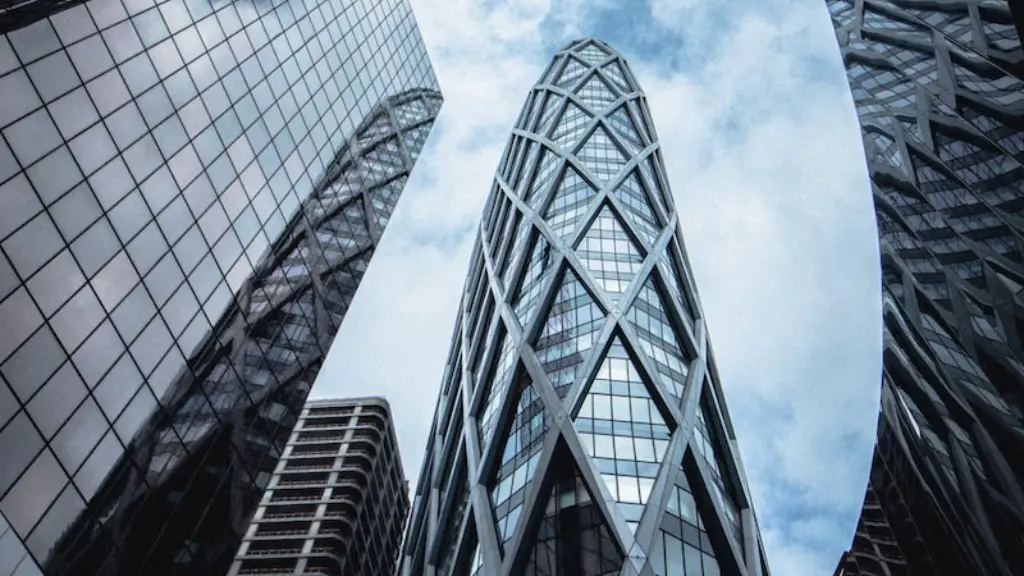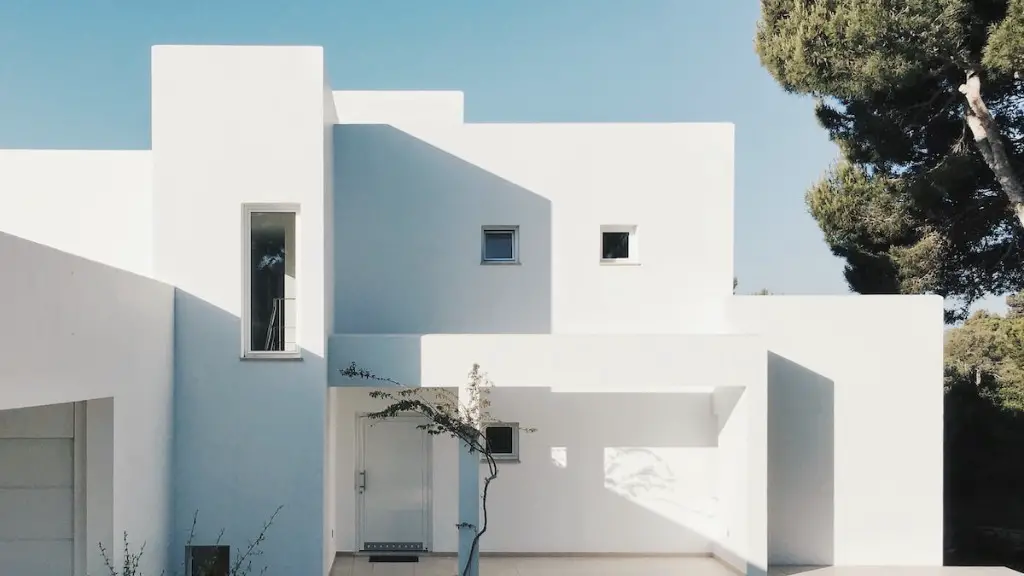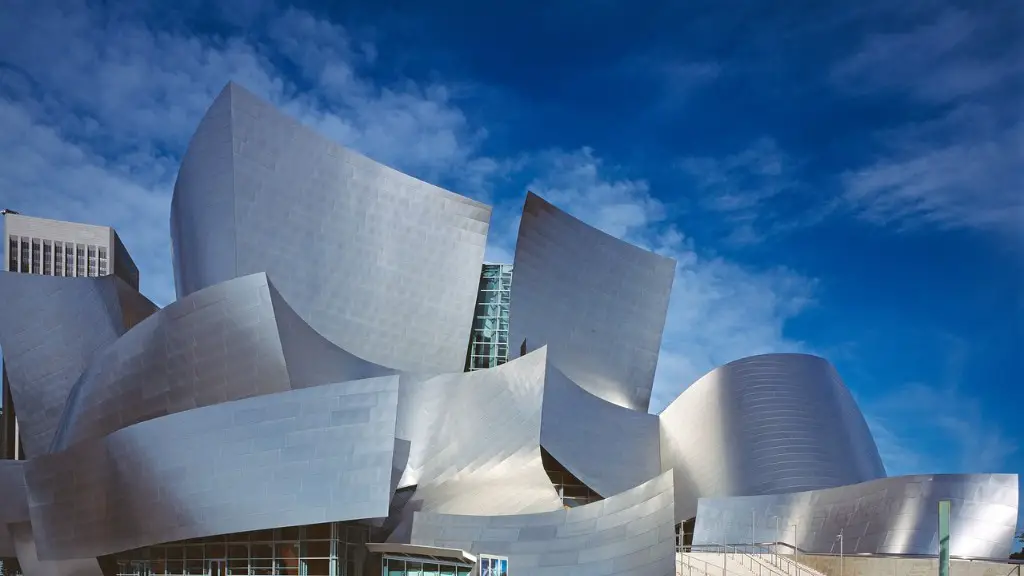The question of whether architecture is considered an artform is one that has been debated since the Renaissance. It is a subject of great complexity, as it has been shaped by changing opinions, cultural trends, and technological developments. Nevertheless, architecture can be considered an integral part of art, although it does come with its own set of challenges.
Architecture can be thought of as the physical manifestation of form and space, conveying emotion and telling stories. Its creation requires talent and dedication, as well as an artist’s eye for composition, colors, and focal points. The most successful architects have a deep understanding of the area in which their artwork will be situated, allowing them to design buildings that take into account the context.
The challenge for architects is to be able to create structures that are both functional and fashionable. They must design for form and function, ensuring that the structure meets its intended purpose, but also appealing to the eye. This poses a unique challenge, as beauty is subjective and cultures, trends and tastes are always changing.
Architecture also has a unique ability to connect people with their environment in a way that few other art forms can. When architects design a building, they are often attempting to capture a feeling or a sense of a place, a culture, or even a moment in history. Good architecture should be able to generate dialogue; it should provoke thought, debate, and even controversy.
It could be argued that architecture stands apart from other forms of art because of the constraints placed on its creation. Rather than creating an abstract structure, architects must work within very practical parameters – costs, construction limitations, building codes, and environmental considerations. This means that each project must be carefully considered and that artistic expression must work in tandem with practicality.
Moreover, architecture can exist forever, often long after its designers are gone. Its legacy can last for centuries, allowing generations of people to come into contact with its beauty. It is this longevity of architecture that makes it an art form that is unique, and thus worthy of consideration.
Durability In Architecture
Architecture stands above other forms of art because of its durability. Since it is meant to last for many years, it must be built in a way that will ensure its safety and security, as well as its relevance over time. This means that architects must take a long-term, forward-looking perspective when designing a building, considering potential changes in technology, trends, and needs.
The use of durable materials is also essential when designing a structure. Many architects use materials that are designed to stand the test of time, such as stone, brick, and concrete. However, modern architects are increasingly turning to more sustainable materials, such as recycled plastics and timber.
Finding the right balance between aesthetics and functionality is also crucial for creating a durable structure. Architects must decide which design elements will be seen and ones that will be invisible, such as structural steel and reinforcement.
Lastly, the architecture of a building should be designed for adaptability. This means creating a structure that can evolve and adjust over time, such as incorporating more efficient heating systems or adding additional stories. This ensures that a building can survive changing tastes and preferences.
Economic Impact Of Architecture
The economic impact of architecture is significant and often underestimated. Not only do architectural projects boost the economy by creating jobs, but they also can increase the value of a neighborhood or city. Most people prefer to live near attractive, well-designed buildings that reflect their values. Buildings that capture public interest can draw visitors, which can help boost a city’s economy.
Architecture can also help to create an identity for a city. Good architecture can create an atmosphere that people want to be involved in and can represent what is unique about a city. For example, the Guggenheim in Bilbao was instrumental in transforming the city from an industrial city to a cultural center.
Furthermore, architecture can help to revitalize an area, drawing attention and investment. This could be done through the redevelopment of a derelict area, the restoration of a historical building, or the addition of a new project. All of this can result in an increase in real estate values, as well as improved access to jobs, services, and public amenities.
While great architecture often comes at a financial cost, it can also provide returns by increasing tourism, improving the quality of life, and boosting the local economy.
Architecture As Public Art
In times of economic uncertainty, public art can play an important role in lifting people’s spirits and helping to define a community’s identity. Over the last few decades, there has been an increase in the use of public art in cities and towns around the world, with architects increasingly designing memorable buildings that become part of the fabric of a town or city.
In many cases, the use of public art is part of a larger urban regeneration project. By creating visually appealing buildings, streets and parks, architects can create engaging spaces that people want to experience and explore. This makes cities more attractive to potential visitors and investors.
Not only does this kind of art bring added beauty to an area, it can also help to revive a city and create jobs. By using innovative and creative designs, architects are able to enhance a city’s cultural identity and contribute to its economic growth.
It is clear that architecture can be considered an art form. It encompasses both practical elements, such as construction restrictions and material limitations, as well as creative elements, such as composition, form, and culture. Architects have to find a way to juggle both practicality and aesthetics in order to create something that is both truly functional and utterly beautiful. It is this challenge that makes architecture an art form in its own right.
Evolution Of Architecture
The evolution of architecture has been shaped by many factors, such as advances in technology, population growth, limited resources, and changing social and cultural norms. As each of these elements has changed, so too have the designs and building styles.
Technological advances have allowed architects to construct larger and more complex buildings, such as skyscrapers, bridges, and tunnels. At the same time, population growth has resulted in more densely populated cities, requiring buildings to be built that are more efficient and space-conscious.
The growing importance of sustainability has also had a profound effect on architecture. Architects are increasingly designing buildings that take into account energy efficiency and the use of renewable materials. This has led to a greater emphasis on green building techniques, such as solar energy systems, rainwater collectors, and natural ventilation systems.
Finally, cultural influences have also had a significant influence on architecture. As societies have moved away from traditional styles, there have been signs of a growing trend toward modern, minimalist designs that incorporate contemporary forms of art.
The Power Of Architecture
As can be seen, architecture has an immense power to affect individuals and societies alike. It can contribute to a city’s identity, draw people together and create memories. This is why architecture is commonly said to be one of the most powerful art forms.
Good architecture can inspire and move people in a way that few other forms of art can. It is a form of communication that speaks to us on an emotional level, reminding us of our values and beliefs. By creating a structure that conveys a message, architects are able to connect people with their environment in a way that can’t be achieved with a brush or a canvas.
At its core, architecture is an expression of both cultural heritage and personal identity. It can capture our collective history and create a better future. It is for this reason that architecture is rightly considered an art form.
Social Responsibility Of Architects
The role of architects is changing, and with it comes a greater sense of responsibility. Architects now must consider how their designs will affect their communities and the environment. They must take into account how their designs will impact the health and welfare of those who live and work in the spaces they create.
To this end, architects now have to prioritize the use of sustainable materials, energy efficiency, and consider the wider impact of their designs on local cultures and communities. These considerations, if done correctly, can have a lasting positive effect, creating spaces that are both beautiful and beneficial to society as a whole.
Furthermore, architects have a greater responsibility to consider the economic implications of their designs. Buildings need to be designed with the future in mind, taking into account energy costs and potential changes in the marketplace.
As can be seen, architecture is more than just the practice of creating buildings. It is a powerful art form that can shape the environments and lives of individuals and communities. Architects must embrace this responsibility and understand the importance of their work in order to create beautiful and meaningful places that stand the test of time.
Digital Architecture
In the digital age, architecture is increasingly being used in innovative ways. Technology has enabled architects to use sophisticated 3D modelling and computer-aided design tools to create more intricate, sophisticated designs. This has opened the door for greater creativity and flexibility, pushing the boundaries of what is possible.
Digital architecture has also made it possible for architects to create environments that are tailored to the needs of their clients. By taking into account specific requirements and constraints, architects can create spaces that are designed for comfort and efficiency. This can help to reduce costs and create a more pleasant environment for those who use them.
Furthermore, the use of augmented reality and virtual reality has opened up the possibilities for architects to visualize their ideas before they are built, allowing them to show clients what their building would look like in the real world. This has greatly improved communication between client and architect, allowing for a much smoother process.
As technology continues to develop, it is clear that digital architecture will become increasingly important. Architects must remain up to date with new developments and trends if they are to remain competitive in the field.





